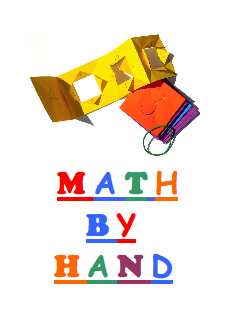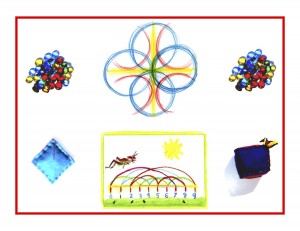
Day 147
For one year, 365 days, this blog will address the Common Core Standards from the perspective of creating an alternate, ambient learning environment for math. Ambient is defined as “existing or present on all sides, an all-encompassing atmosphere.” And ambient music is defined as: “Quiet and relaxing with melodies that repeat many times.
Why ambient? A math teaching style that’s whole and all encompassing, with themes that repeat many times through the years, is most likely to be effective and successful. Today’s post will begin reviewing the Common Core ELA standards, moving through them more quickly than the Common Core math standards. The standards will be posted in groups of three to five in blue, followed by their ambient counterparts.
English Language Arts Standards > Reading: Informational Text > Grade 2
Key Ideas and Details:
CCSS.ELA-LITERACY.RI.2.1
Ask and answer such questions as who, what, where, when, why, and how to demonstrate understanding of key details in a text..
CCSS.ELA-LITERACY.RI.2.2
Identify the main topic of a multi paragraph text as well as the focus of specific paragraphs within the text.
CCSS.ELA-LITERACY.RI.2.3
Describe the connection between a series of historical events, scientific ideas or concepts, or steps in technical procedures in a text.
Have you ever seen a typical 8 year old closely reading the morning newspaper? An incongruous image, isn’t it. The Waldorf philosophy holds that the child comes into fully awake and aware consciousness extremely gradually, while slowly growing into a functioning member of the modern world. Here’s a look at how the each grade level fits into the cultural / developmental spectrum:
Grade 1: Fairy and Folk Tales
Grade 2: Fables and Saints/Heroes Legends
Grade 3: Creation Stories
Grade 4: Trickster Tales and Legends
Grade 5: Classical Civilizations: Greece, Egypt, India
Grade 6: Rome
Grade 7: Medieval History and the Renaissance
Grade 8: World History up to current.
So let’s say that the 8th grader, not the 8 year old would be most likely to be seen reading the morning newspaper. The unique nature of the young human requires a very long childhood. Until Piaget and other child development psychologists however, children were perceived as little adults and treated as such. Only after this cognitive research was accepted, was it generally acknowledged that the human brain develops according to its own time frame, slow and steady (wins the race). So, Race To The Top aside (let’s do please put it aside) let’s slow down and let them be little.
A foundation can be built for this appreciation of informational text, on a deeper less consciously abstract level, by including children in a healthy network of local friends and community. Have them participate in a civic way, from very early on. But please be the go-between, so that the world and its cares and concerns aren’t artificially foisted on the child before s/he’s ready to take it on.
Knowledge ensues in an environment dedicated to imaginative, creative knowing, where student and teacher alike surrender to the ensuing of knowledge as a worthy goal. Tune in tomorrow to continue with the Common Core ELA standards and their ambient counterparts.
Tags:
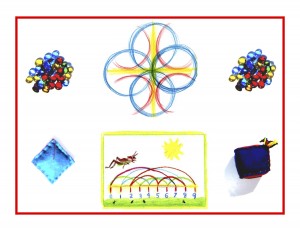
Day 146
For one year, 365 days, this blog will address the Common Core Standards from the perspective of creating an alternate, ambient learning environment for math. Ambient is defined as “existing or present on all sides, an all-encompassing atmosphere.” And ambient music is defined as: “Quiet and relaxing with melodies that repeat many times.
Why ambient? A math teaching style that’s whole and all encompassing, with themes that repeat many times through the years, is most likely to be effective and successful. Today’s post will begin reviewing the Common Core ELA standards, moving through them more quickly than the Common Core math standards. The standards will be posted in groups of three to five in blue, followed by their ambient counterparts.
English Language Arts Standards > Reading: Literature > Grade 2
Integration of Knowledge and Ideas:
CCSS.ELA-LITERACY.RL.2.7
Use information gained from the illustration and words in a print or digital text to demonstrate understanding of its characters, setting, or plot.
(RL.2.8 is not applicable to literature)
CCSS.ELA-LITERACY.RL.2.9
Compare and contrast two or more versions of the same story (e.g., Cinderella stories) by different authors or from different cultures.
Range of Reading and Level of Text Complexity:
CCSS.ELA-LITERACY.RL.2.10
By the end of the year, read and comprehend literature, including stories and poetry, in the grades 2-3 text complexity band proficiently, with scaffolding as needed at the high end of the range.
Though in the Waldorf system independent reading has most likely not yet happened, the level of literature comprehension and understanding is that much greater, since grade level limitations are lifted. Both the fables and legends are illustrated and captioned after being told and retold. A deep sense of these elements of literature: characters, setting, and plot, is gradually gained through exposure, but are not taught abstractly as yet. The stories are also coordinated with academics. See below for another example of how fables and tables can be a wonderful mix.
The fables are recognized as a unique genre and it can easily be seen that their nature is not altered across cultural lines. If fables are taken from various cultures, this sort of compare and contrast happens quite naturally, though not yet abstracted or intellectualized. Reading independently is not the be-all end-all after all. It can happen quite naturally, and will if it’s allowed to ripen in its own time. In the meantime, a tremendous respect for and love of literature’s cultural foundations resonates, deeply and meaningfully. Reading will happen! Trust and faith in the teacher, the child, and the subject matter carries the day.
The fable The Dog and His Bone, with its image of mirroring and reflection, is a wonderful fit with the 11’s table. Here, the bone and its reflection becomes the “twin numbers” of the table. It’s also recommended that the concept be experienced with props before putting it on paper as a drawing. (Note that special compensation is made for the 11 x 10, 11, and 12.) This is an excellent example of allowing knowledge to ensue rather than be pursued. Knowledge ensues in an environment dedicated to imaginative, creative knowing, where student and teacher alike surrender to the ensuing of knowledge as a worthy goal. Tune in tomorrow to continue with the Common Core ELA standards and their ambient counterparts.

Tags:
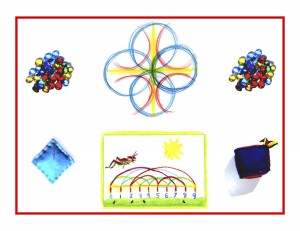
Day 145
For one year, 365 days, this blog will address the Common Core Standards from the perspective of creating an alternate, ambient learning environment for math. Ambient is defined as “existing or present on all sides, an all-encompassing atmosphere.” And ambient music is defined as: “Quiet and relaxing with melodies that repeat many times.
Why ambient? A math teaching style that’s whole and all encompassing, with themes that repeat many times through the years, is most likely to be effective and successful. Today’s post will begin reviewing the Common Core ELA standards, moving through them more quickly than the Common Core math standards. The standards will be posted in groups of three to five in blue, followed by their ambient counterparts.
English Language Arts Standards > Reading: Literature > Grade 2
Craft and Structure
CCSS.ELA-LITERACY.RL.2.4
Describe how words and phrases (e.g, regular beats, alliteration, rhymes, repeated lines) supply rhythm and meaning in a story, poem, or song.
CCSS.ELA-LITERACY.RL.2.5
Describe the overall structure of a story, including describing how the beginning introduces the story and the ending concludes the action.
CCSS.ELA-LITERACY.RL.2.6
Acknowledge differences in the points of view of characters, including by speaking in a different voice for each character when reading dialogue aloud.
When the story is faithfully retold by the children, these nuances are included, without however a conscious picking apart of the story to show the abstract concepts demanded by this standard. The story is given and received whole. Steiner said attempting to analyze a fairy tale (story) is like pulling apart a flower. By the way, when Waldorf students study botany in Grade 5, flowers and plants are not dissected, but rather closely and lovingly observed in their natural environment and then drawn whole (root, stem, leaf, flower, and fruit) in their main lesson, self-made textbooks. Classic poetry, songs, limericks, tongue twisters, and more are included in the morning circle, learned by heart, and integrated with rhythmic movement. Here are a few examples:
Classic: Caterpillar
Caterpillar / Brown and furry, / Caterpillar in a hurry, / Take your walk / To the shady leaf, or stalk, / Or what not, / Which may be the chosen spot. / No toad spy you, / Hovering bird of prey pass by you; / Spin and die, / To live again a butterfly.
Christina Rossetti
Humorous: What Became of Them?
He was a rat and she was a rat / And down in one hole they did dwell, / And both were as black as a witch’s cat, / And they loved one another well. ? He had a tail and she had a tail, / Both long and curling and fine, / And each one said, “Yours is the finest tail / In the world, excepting mine.” / He smelt the cheese and she smelt the cheese, / They both pronounced it good, / And both remarked it would greatly add / To the charms of their daily food. / So he ventured out, and she ventured out, / And I saw them go with pain, / But what befell them I never can tell, / For they never came back again.
Anonymous
Limericks:
A mouse in her room woke Miss Dowd / She was frightened, it must be allowed, / Soon a happy thought hit her / To scare off the critter / She sat up in bed and meowed.
There was a young lady from Leeds / Who swallowed a package of seeds. / Now this sorry young lass / is quite covered in grass, / But has all the tomatoes she needs.
Anonymnous
Describing the structure of the story is far too abstract a task at this age. Elements of the story, like the beginning as an introduction and the ending as a conclusion, are deeply taken in in a strictly experiential way, and must remain so until the capability for abstract thought is available at age 11 or 12. The children are given a wealth of stories that are developmentally appropriate and parallel to their current stage of development at every grade level. This is a priceless gift that serves to build both character and skillful ability in the growing child.
Differences in the points of view of characters are liberally communicated, both in the telling and retelling of the stories. But again, this is not made conscious by using abstract concepts as of yet. Knowledge ensues in an environment dedicated to imaginative, creative knowing, where student and teacher alike surrender to the ensuing of knowledge as a worthy goal. Tune in tomorrow to continue with the Common Core ELA standards and their ambient counterparts.
Tags:
Day 144
For one year, 365 days, this blog will address the Common Core Standards from the perspective of creating an alternate, ambient learning environment for math. Ambient is defined as “existing or present on all sides, an all-encompassing atmosphere.” And ambient music is defined as: “Quiet and relaxing with melodies that repeat many times.
Why ambient? A math teaching style that’s whole and all encompassing, with themes that repeat many times through the years, is most likely to be effective and successful. Today’s post will begin reviewing the Common Core ELA standards, moving through them more quickly than the Common Core math standards. The standards will be posted in groups of three to five in blue, followed by their ambient counterparts.
English Language Arts Standards > Reading: Literature > Grade 2
Key Ideas and Details:
CCSS.ELA-LITERACY.RL.2.1
Ask and answer such questions as who, what, where, when, why, and how to demonstrate understanding of key details in a text.
CCSS.ELA-LITERACY.RL.2.2
Recount stories, including fables and folktales from diverse cultures, and determine their central message, lesson, or moral.
CCSS.ELA-LITERACY.RL.2.3
Describe how characters in a story respond to major events and challenges.
There is not an imperative yet at the Grade 2 level, for independent reading and writing. The children continue to hear excellent examples of world-class literature, exposing them to all components listed in the first standard here. Text understanding is deep and complete, as demonstrated by the amount of detail and accuracy with which all of the stories are retold by the children. Connecting the content of the story to an artistic rendering, writing key details as captions, and blending it with academic content deepens this understanding even further while making the academics more developmentally accessible and understood.
As is true of all literature presented at every grade level in Waldorf education, the Grade 2 focus is on a culturally diverse body of original source material. Though the fables included in the Math By Hand stories book are all Aesop’s, there’s an awareness of and encouragement to also explore fables from other cultures. The saints and heroes legends can come from widely diverse times and cultures. The central message or moral of the fables and legends is not directly emphasized or taught since the vessel of the story encapsulates it in such a way that it can be understood and processed on a much deeper level.
Both the fables and saints and heroes legends provide abundant opportunities to explore the characters’ responses to major events and challenges. Though the fables’ characters are almost exclusively animal ones, there is no lack of real and challenging situations that need to be carefully thought about if not resolved. And the saints and heroes legends universally deal with much more intense challenges than most of us must grapple with in our daily lives. Because the saints and heroes characteristically respond with grace and love, their stories do wonderfully counterbalance the wiliness found within the fables, beautifully reflecting the polarity with which a typical 8 year old faces the world.
Knowledge ensues in an environment dedicated to imaginative, creative knowing, where student and teacher alike surrender to the ensuing of knowledge as a worthy goal. Tune in tomorrow to continue with the Common Core ELA standards and their ambient counterparts.
Tags:
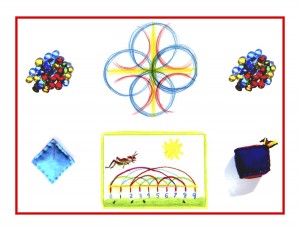
Day 143
For one year, 365 days, this blog will address the Common Core Standards from the perspective of creating an alternate, ambient learning environment for math. Ambient is defined as “existing or present on all sides, an all-encompassing atmosphere.” And ambient music is defined as: “Quiet and relaxing with melodies that repeat many times.
Why ambient? A math teaching style that’s whole and all encompassing, with themes that repeat many times through the years, is most likely to be effective and successful. A brief disclaimer before embarking on the Common Core ELA standards for Grade 2. Waldorf is a “slow start” curriculum, but in the spirit of the famous fable The Turtle and the Hare, it can be seen that slow beginnings might very well make for more victories in the end.
Slow and steady wins the race, is the moral of this tale and can be extrapolated to match the wisdom of the Waldorf philosophy. Going against today’s rising tide of hurrying children out of childhood in too many ways to count while espousing a “sooner is better” philosophy across the board with education, Waldorf chooses to stay the course that’s true to childhood.
In this vein, children are given the gift of literature that’s steeped in the age or culture that resonates with their developmental stage through the grades, but are not expected to read or write until those abilities flower and fruit at the optimal time. In Grade 2, the trickster comes to the fore through the fables’ wily, sometimes ill-intentioned animal characters. The morals of the tales are deeply taken in, parallel to the inevitable fading of childish innocence.
In Grade 1, the fairy tales supported the child with the belief that good will win in the end, but now the polarities are starker and more pronounced. Reynard never comes to justice, no matter how many evils he perpetrates on the community. The deep, long-suffering goodness of the saints and heroes do however, serve to balance the justice scales in a complex way that lives deep within the child, deeper than any direct moralizing or proselytizing ever could.
Math By Hand is math and language arts integrated so it makes sense to include the language arts component here, but the standards will be reviewed much more briefly with three, five, or more appearing in each post, starting tomorrow. Knowledge ensues in an environment dedicated to imaginative, creative knowing, where student and teacher alike surrender to the ensuing of knowledge as a worthy goal. Tune in tomorrow as we move on to the Common Core ELA standards and their ambient counterparts.
Tags:
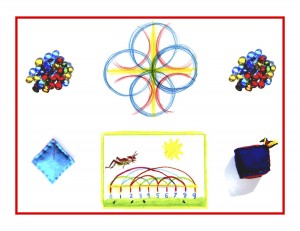
Day 142
For one year, 365 days, this blog will address the Common Core Standards from the perspective of creating an alternate, ambient learning environment for math. Ambient is defined as “existing or present on all sides, an all-encompassing atmosphere.” And ambient music is defined as: “Quiet and relaxing with melodies that repeat many times.
Why ambient? A math teaching style that’s whole and all encompassing, with themes that repeat many times through the years, is most likely to be effective and successful. Back to our hero, Saint Francis, and anti-hero, Reynard Fox, tomorrow. For today, an observation re a Facebook post and a question: “Should elementary students’ work be beautiful and colorful, or is this unimportant, even irrelevant?”
The Facebook post was an image of a second grader’s homework, posted by her mom and reposted on my page. The assignment was to “Write all the ways to make 16 using counters and every dot has a partner.” (See image below.) Mom was unable to decode the assignment and said that her daughter needed to do her best on her own. The result was somewhat successful but not aesthetically pleasing, certainly not beautiful.
This got me thinking about the Waldorf imperative that all student work be beautiful related to the idea that the focus of middle childhood (from ages 7-14) be based on the beautiful and artistic. The three virtues of Goodness, Beauty, and Truth apply to the three stages of childhood in this way: Goodness to the baby and young child from 0-7, Beauty to the elementary-age child, ages 7-14, and Truth to the teen-young adult, ages 14-21.
Education modeled on these virtues at these ages looks exactly like Waldorf, wherever and however it happens, in a classroom or at home. Goodness surrounds the birth-7 year old child up through Kindergarten, in an environment that’s homey, family-oriented, and focused on play, crafts, cooking, and homemaking arts. From ages 7-14 there’s a deep desire to learn, but the mature stage of brain development that would make “executive function” learning possible has not yet happened.
At puberty, this higher level reasoning does become available, allowing learning to now be more abstract and logically-based. These stages of child-development are reflected in the work of many experts, Piaget and Steiner among them. Beauty and art then, function as a necessary buffer or translator, and as such must be consistently, inextricably integrated with all that is taught and learned for ages 7-14.
In light of this, look at the second image below, an illustration of the number 12 as the King of Numbers as it’s presented in Grade 1. The theory is that 12 is the richest in factors, compared to the numbers 4, 6, and 13, and this concept is brought back again and again until factors are formally taught, later on. Beyond the question of whether the sort of reasoning demanded by Common Core is developmentally appropriate (it’s not), is the imperative that all of the children’s work be beautiful.
Knowledge ensues in an environment dedicated to imaginative, creative knowing, where student and teacher alike surrender to the ensuing of knowledge as a worthy goal. Tune in tomorrow for more on the Grade 2 language arts content, before moving on to the Common Core ELA standards and their ambient counterparts.


Tags:
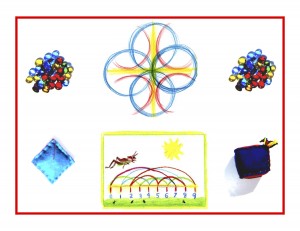
Day 141
For one year, 365 days, this blog will address the Common Core Standards from the perspective of creating an alternate, ambient learning environment for math. Ambient is defined as “existing or present on all sides, an all-encompassing atmosphere.” And ambient music is defined as: “Quiet and relaxing with melodies that repeat many times.
Why ambient? A math teaching style that’s whole and all encompassing, with themes that repeat many times through the years, is most likely to be effective and successful. Time to take a break from math to focus briefly on language arts. Both Waldorf and Math By Hand methods are intensely cross-curricular. Math and language arts live side-by-side, supporting each other and the child with a well-balanced and effective approach.
Waldorf and Math By Hand Grade 2 language arts content reflects the developmental stage of the 8 year old. Here is an excerpt from the Math By Hand Grade 2 binder:
The Grade 2 “mood” is one of contrasts. There’s a settling in to the new world of challenges and learning begun in Grade 1, accompanied by a certain restlessness. As boundaries are tested, there’s a desire to take on more, which can be expressed as a somewhat overly confident rambunctiousness. This quality is reflected in the Aesop’s Fables’ brashly bold animal characters, as they repeatedly test any and all boundaries. The fables’ moral lessons are juxtaposed against the legends that feature the lives and deeds of saints and heroes.
And here are two stories. The first features Reynard, the sly and cunning fox from medieval France, and the second features Saint Francis, the monk who gave up a life of riches to give of himself. This little story is taken from the Math By Hand Grade 2 Daily Lesson Plans book, and relates the quality of selfless giving to the process of subtraction. (In Waldorf, the 4 processes are matched with the four temperaments.)
Reynard and Bruin
You must know that once upon a time Reynard the Fox and Bruin the Bear went into partnership and kept house together. Would you like to know the reason? Well, Reynard knew that Bruin had a beehive full of honeycomb, and that was what he wanted. But Bruin kept so close a guard upon his honey that Master Reynard didn’t know how to get away from him and get hold of the honey. So one day he said to Bruin, “Pardner, I have to go and be gossip — that means godfather, you know — to one of my old friends.” “Why, certainly,” said Bruin. So off Reynard goes into the woods, and after a time he crept back and uncovered the beehive and had such a feast of honey. Then he went back to Bruin, who asked him what name had been given to the child. Reynard had forgotten all about the christening and could only say, “Just-Begun.” “What a funny name,” said Master Bruin. A little while after, Reynard thought he would like another feast of honey. So he told Bruin that he had to go to another christening. And off he went. And when he came back and Bruin asked him what was the name given to the child, Reynard said, “Half-Eaten.” The third time the same thing occurred, and this time the name given by Reynard to the child that didn’t exist was “All-Gone.” You can guess why. A short time afterwards, Master Bruin thought he would like to eat up some of his honey and asked Reynard to come and join him in the feast. When they got to the beehive, Bruin was so surprised to find that there was no honey left, and he turned round to Reynard and said, “Just-Begun, Half-Eaten, All-Gone. So that is what you meant. You have eaten my honey!” “Why no,” said Reynard. “How could that be?” I have never stirred from your side except when I went a-gossiping, (serving as godfather) and then I was far away from here. You must have eaten the honey yourself, perhaps when you were asleep. At any rate we can easily tell. Let us lie down here in the sunshine, and if either of us has eaten the honey, the sun will soon sweat it out of us.” No sooner said than done, and the two lay side by side in the sunshine. Soon Master Bruin commenced to doze, and Mr. Reynard took some honey from the hive and smeared it round Bruin’s snout. Then he woke him up and said, “See, the honey is oozing out of your snout. You must have eaten it when you were asleep.”
Saint Francis and the Story of Minus
The characterizations of the 4 processes are essential to a deeper understanding and successful working with them. Read about the life of Saint Francis and keep it in mind as you tell this little story. It will help to show the quality of subtraction as that of both loss and unselfish giving.
Though Saint Francis was born quite rich and loved nothing more than having a good time with his friends, he was so moved by a poor, starving beggar in the street that he turned his silk pockets inside out, emptying them into the beggar’s hands. Very soon after that he fell very ill, and during this illness he painfully realized that he had to change his ways.
His friends laughed at him, but from then on Saint Francis could no longer keep anything for himself. He lost everything that was given to him because he gave it all away to those who were suffering and hungry. He often went hungry himself and became so poor that he had to live in a mountain cave. But Saint Frances glowed with another kind of wealth. Soon every person or creature he met wanted to be near him, and to follow in his ways.
Minus is like Saint Francis. Though it may seem Minus is poor and always losing everything, it could also be said that Minus gives away all it has. Loss is sad yes, but giving is joyful.
Knowledge ensues in an environment dedicated to imaginative, creative knowing, where student and teacher alike surrender to the ensuing of knowledge as a worthy goal. Tune in tomorrow for more on the Grade 2 language arts content, before moving on to the Common Core ELA standards and their ambient counterparts.
Tags:
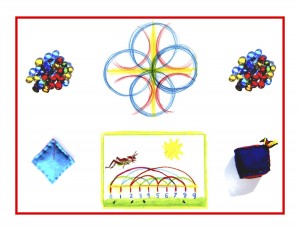
Day 140
For one year, 365 days, this blog will address the Common Core Standards from the perspective of creating an alternate, ambient learning environment for math. Ambient is defined as “existing or present on all sides, an all-encompassing atmosphere.” And ambient music is defined as: “Quiet and relaxing with melodies that repeat many times.
Why ambient? A math teaching style that’s whole and all encompassing, with themes that repeat many times through the years, is most likely to be effective and successful. Today’s post will feature the next Grade 2 Common Core Math Standard listed in blue, followed by its ambient counterpart as practiced by Waldorf Education and Math By Hand.
Number and Operations in Base Ten 2.NBT
Use place value understanding and properties of operations to add and subtract.
9. Explain why addition and subtraction strategies work, using place value and the properties of operations.
Once again, a developmentally inappropriate task: asking an 8 year old to examine his own reasoning. See the bottom of this post for an excellent response by a second grader when asked to explain “how the number sentence shows the problem.” Pushing advanced concepts down to lower and lower grades (including pre-K!) is not the answer. It causes more problems than it solves, with children succumbing to severe stress-related symptoms.
Here is a link to an excellent article from The Washington Post’s Answer Sheet entitled Why Young Kids Are Struggling with Common Core Math. The authors cite Jean Piaget’s work as an explanation for the fact that though inductive logic is accessible before age 12, deductive logic is not. The article ends on a profound note, one that should be carefully considered by all concerned parents and educators:
“There is time to help our students to develop high-level thinking skills that require the manipulation of multiple symbols and the use of deductive logic. That time is adolescence. To everything there is a season—let’s not rush (or ruin) the most important season of all-childhood.” Read the entire article here: #mce_temp_url#
Knowledge ensues in an environment dedicated to imaginative, creative knowing, where student and teacher alike surrender to the ensuing of knowledge as a worthy goal. Tune in tomorrow for more Common Core, and its ambient, Waldorf/Math By Hand counterpart.
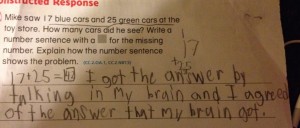
Tags:
Day 139
For one year, 365 days, this blog will address the Common Core Standards from the perspective of creating an alternate, ambient learning environment for math. Ambient is defined as “existing or present on all sides, an all-encompassing atmosphere.” And ambient music is defined as: “Quiet and relaxing with melodies that repeat many times.
Why ambient? A math teaching style that’s whole and all encompassing, with themes that repeat many times through the years, is most likely to be effective and successful. Today’s post will feature the next Grade 2 Common Core Math Standard listed in blue, followed by its ambient counterpart as practiced by Waldorf Education and Math By Hand.
Number and Operations in Base Ten 2.NBT
Use place value understanding and properties of operations to add and subtract.
8. Mentally add 10 or 100 to a given number 100 – 900, and mentally subtract 10 or 100 to a given number 100 – 900.
The Morning Circle exercises boast much mental math in a variety of fun forms. Here is a sample Circle from the Math By Hand Grade 2 Daily Lesson Plans book. Note: the above standard could be inserted in place of the #3 or #4 exercises, using their same content. (And note the joyful movement and language arts integration!)
Knowledge ensues in an environment dedicated to imaginative, creative knowing, where student and teacher alike surrender to the ensuing of knowledge as a worthy goal. Tune in tomorrow for more Common Core, and its ambient, Waldorf/Math By Hand counterpart.
Grade 2 / Block 4 / Morning Circle I
1) Choose 1-2 classic poems from the B (85-92) and teach/learn them by heart.
2) Recite and/or sing (find the tunes online if you need to) 1-2 rhymes/songs B (96-106).
3) HOPSCTOCH 1-2-3! see the B (83). Play a times tables version of the game, drawing diagram #1 and numbers, with chalk on blacktop or carpet. Or you can make reusable hopscotch times tables diagrams using crayon on 3 poster boards taped to the floor.
4) Do call and response times tables, using the Comet Ball or Color Cubes (post a wall chart if needed). For example, call: 3, response: 6, call: 9, response: 12, etc. Or mix it up by calling various equations, call: 4 x 8, response: 32, call: 3 x 7, response: 21, etc.
5) Choose a number of Tongue Twisters and say them till smooth, the more the merrier!
6) Choose 3-4 Limericks B (93-95) and recite them while walking in a circle and clapping, playing rhythm sticks or a tambourine, waving a small flag, or hopping up and down in place.
Tags:
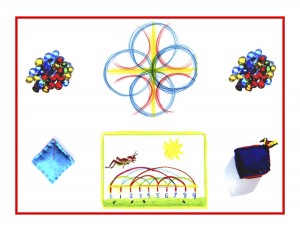
Day 138
For one year, 365 days, this blog will address the Common Core Standards from the perspective of creating an alternate, ambient learning environment for math. Ambient is defined as “existing or present on all sides, an all-encompassing atmosphere.” And ambient music is defined as: “Quiet and relaxing with melodies that repeat many times.
Why ambient? A math teaching style that’s whole and all encompassing, with themes that repeat many times through the years, is most likely to be effective and successful. Today’s post will feature the next Grade 2 Common Core Math Standard listed in blue, followed by its ambient counterpart as practiced by Waldorf Education and Math By Hand.
Number and Operations in Base Ten 2.NBT
Use place value understanding and properties of operations to add and subtract.
7. Add and subtract within 1000, using concrete models or drawings and strategies based on place value, properties of operations, and/or the relationship between addition and subtraction; relate the strategy to a written method. Understand that in adding or subtracting three-digit numbers, one adds or subtracts hundreds and hundreds, tens and tens, ones and ones; and sometimes it is necessary to compose or decompose tens or hundreds.
The Math By Hand place value materials and methods thoroughly cover this standard. As stated in yesterday’s post, numbers reach into the several thousands using three- and four-digits. Another huge advantage is that the 4 processes are worked with side-by-side, which among other things allows greater opportunities for exploring the relationships between all 4.
The concrete models used are two sets of color-coded columns, one for table top and one for floor use. The table top set is paired with a beans bank: 3 pouches holding 3 kinds of beans, color-coded with the columns. The red pouch holds black beans and goes with the red ones column. The yellow pouch holds kidney beans and is matched with the tens column. The blue pouch holds lima beans and goes with the hundreds column.
Beans are cashed in when they go over 10 in the ones column or over 100 in the tens column (10 black beans are cashed in for 1 kidney bean, while 10 kidney beans are cashed in for 1 lima bean). Thus the process of composing and decomposing is experiential, using concrete models to make abstract concepts doable and understandable for 7-8 year olds. The beans can be easily translated to coins, using pennies, dimes, and silver dollars.
After the table top columns are used for some time, focus switches to the floor columns, which include the thousands place. For these, five large index card number sets of the numbers 0-9 are created beforehand and kept handy in stacks. Smaller carrying/borrowing number cards are created as well. The addition or subtraction problem is written on the board or large paper then it is transposed to the columns using the large cards. Each column is added or subtracted, and if there’s a regrouping number, it’s physically jumped to the top of the next column.
After the floor columns have been used for some time, practice in all 4 processes resumes, now including regrouping. Numbers can be quite large, up into the several thousands, now that the regrouping skill has been mastered. Because long multiplication and division are not taught until Grade 3 however, these problems are kept to their short forms for now, with three- or four-digit numbers multiplied or divided by times tables up to 12.
Knowledge ensues in an environment dedicated to imaginative, creative knowing, where student and teacher alike surrender to the ensuing of knowledge as a worthy goal. Tune in tomorrow for more Common Core, and its ambient, Waldorf/Math By Hand counterpart.
Tags:

